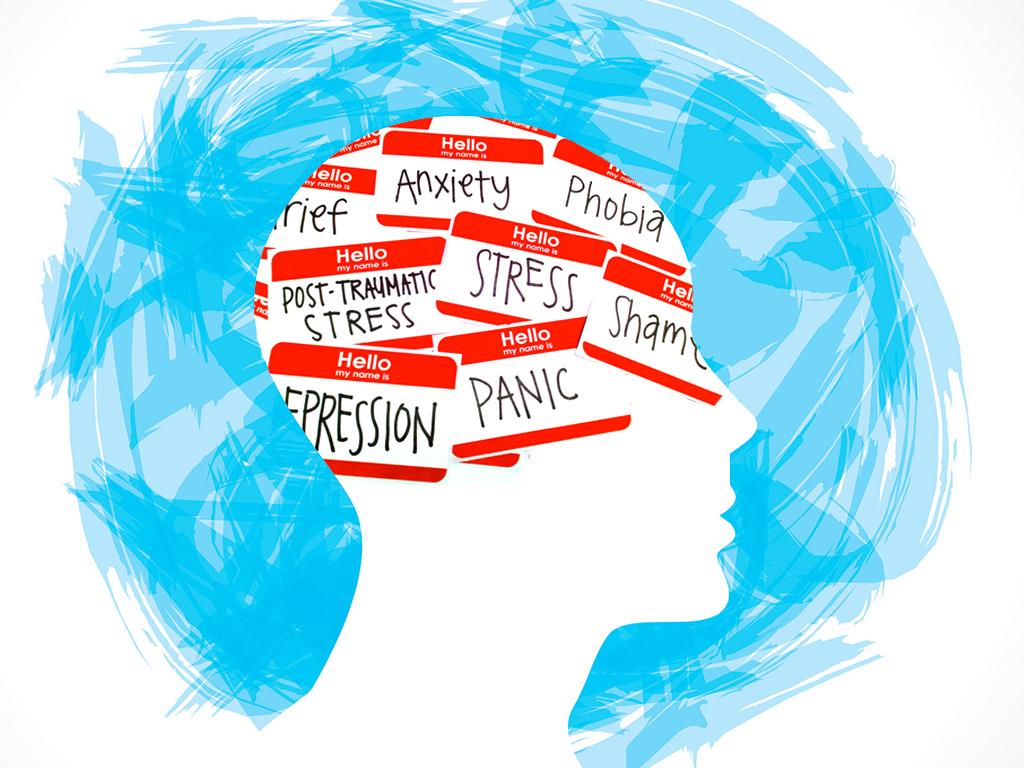How Mental Health Affects Students
-By Sania Patel

According to the World Health Organization, Mental Health is defined as,
“state of well-being in which the individual realizes his or her own abilities, can cope with the normal stresses of life, can work productively and fruitfully, and can contribute to his or her community,”
With the current stresses and demands of daily life, many people find themselves struggling with the aspects defined above.
Mental health is divided into emotional, psychological, and social well-being. There are four types of mental health issues: personality disorders, psychotic disorders, eating disorders, and anxiety disorders. This is then subdivided into specific conditions and illnesses such as dissociative disorders, bipolar affective disorders, and obsessive-compulsive disorders.
People’s mental health affects how they think, feel, and act; it also determines how people handle stress, related to others, and make healthy choices. Contrary to popular belief, mental health and mental illness are different. A person can experience poor mental health and not be diagnosed with a mental illness. Likewise, a person diagnosed with a mental illness can experience periods of physical, mental, and social well-being issues.
Mental illnesses are among the most common health conditions in the United States. The Center For Disease Control and Prevention (CDC) provides a list of statistics to support this statement. More than 50 percent of people will be diagnosed with a mental illness or disorder at some point in their lifetime, and 1 in 5 Americans will experience a mental illness in a given year. The CDC also states that 1 in 5 children have had a seriously debilitating mental illness, whether currently or at some point during their life. Finally, 1 in 25 Americans lives with a severe mental illness, such as schizophrenia, bipolar disorder, or major depression.
Mental illnesses are traditionally caused by adverse life experiences, such as trauma or a history of abuse. The CDC mentions that experiences relate to other ongoing medical conditions may also contribute to poor mental health. The classic causes of mental illnesses, however, are the use of alcohol and drugs, feelings of loneliness or isolation, and biological factors or chemical imbalances in the brain.
People who suffer from mental issues can face dire consequences. Poor mental health can contribute to many physical health problems, such as diabetes, heart disease, and stroke. With the presence of mental health issues, people can experience social isolation, family conflicts, relationship difficulties, and can even fall into poverty and homelessness. People with poor mental health are also more likely to become addicted to smoking, drugs, and alcohol.
Positive mental health contributes to the exact opposite symptoms. The Duke University School of Medicine defines positive mental health as,
“presence of positive emotions and good functioning (in both individual and social environments).”
People who have positive mental health feel good about themselves and do not become overwhelmed by emotions. They have lasting and personal relationships and feel comfortable with other people. People with thriving mental health are naturally healthy and have fewer chronic health conditions. A study found that positive psychological well-being can reduce the risks of heart attacks and strokes.
With the constant pressures and stresses of school, homework, and extracurricular activities, students often face the threat of poor mental health conditions, which can further harm their physical wellbeing and performance in school. Overall, mental health problems can affect a student's energy level, concentration, dependability, mental ability, and optimism, therefore, hindering performance. Mental health issues can greatly affect a student's academic performance, as well as reduce social interactions and other crucial aspects of school.
The CDC reports,
“More than 1 in 3 high school students had experienced persistent feelings of sadness or hopelessness in 2019, a 40 percent increase since 2009. In 2019, approximately 1 in 6 youth reported making a suicide plan in the past year, a 44 percent increase since 2009.”
According to a 2018 World Health Organization survey, about one-third of students experience mental health disorders before they even arrive as freshmen in college. A 2018 Harvard Medical School study, which looked at over 67,000 college students from across more than 100 institutions, found that about 1 in 5 college students had reported having suicidal thoughts in the last year. Lastly, a National Alliance on Mental Illness (NAMI) survey found that 64 percent of students who had dropped out of college cited mental health as a reason for leaving. The same study notes that 45 percent of these students did not report their mental health struggles before deciding to leave college.
Students who display a positive mindset are, consequently, reported to perform better in school. These students are more likely to be satisfied with themselves and their surroundings and are able to better control their emotions. With these abilities, students with a healthy mindset are able to achieve and accomplish more; they have the ability to fuel themselves to grow and learn in all situations.
Given these harrowing statistics, the idea to revamp the current education system and access to mental health care is apparent. Schools should nurture creativity and inclusion within their learning institutions, and implement ways to create a safe space for students to share their feelings. The work provided in school should benefit the student and be an effective use of their time; arbitrary stresses and unnecessary work should be excluded.
Overall, students must find schools to be educational, useful, and exciting with an inclusive habitat. By reforming the education system, students will find schools to be less of an oppressive environment that breeds mental troubles. Students will be able to spend more time doing what they love, rather than wasting time and energy on forced assignments. Doing so will decrease the dropout rates and suicidal rates on students, and promote positive mental health.